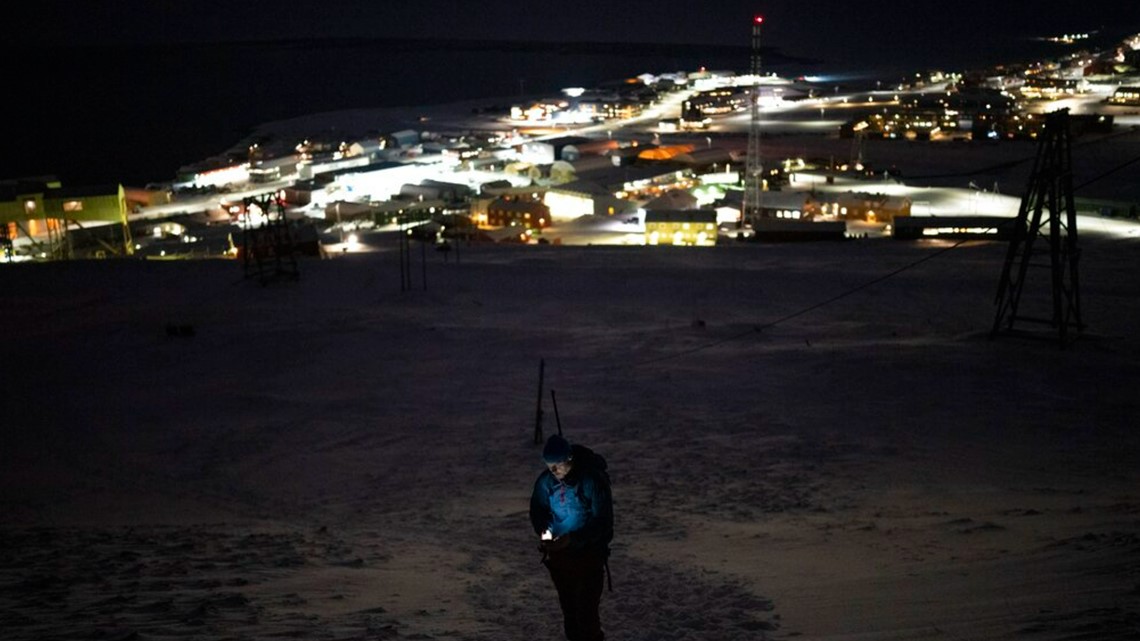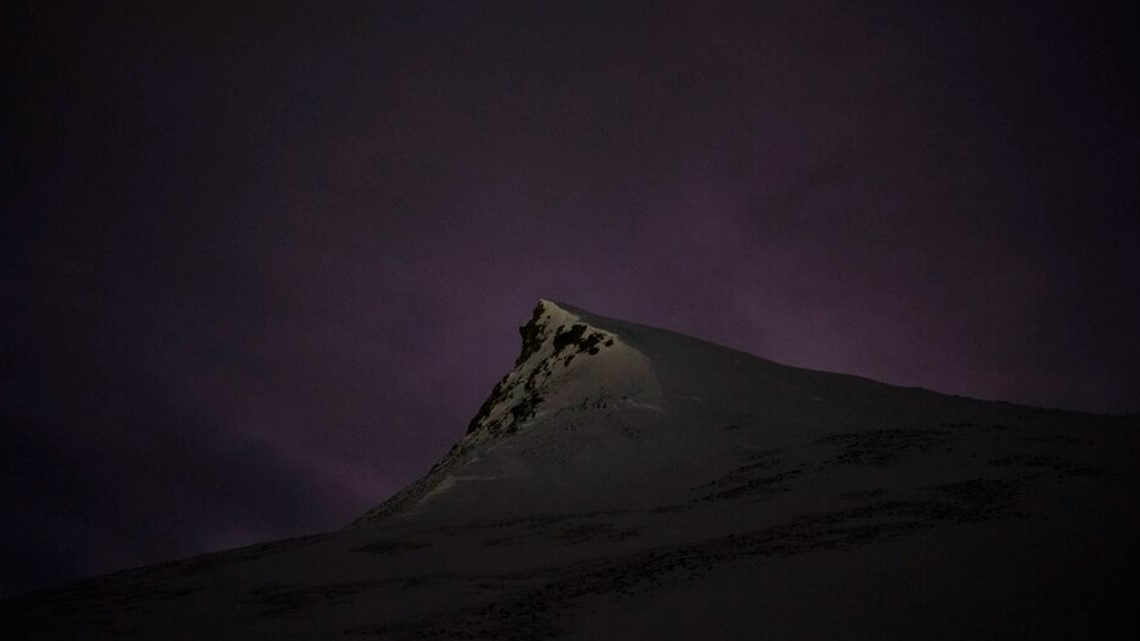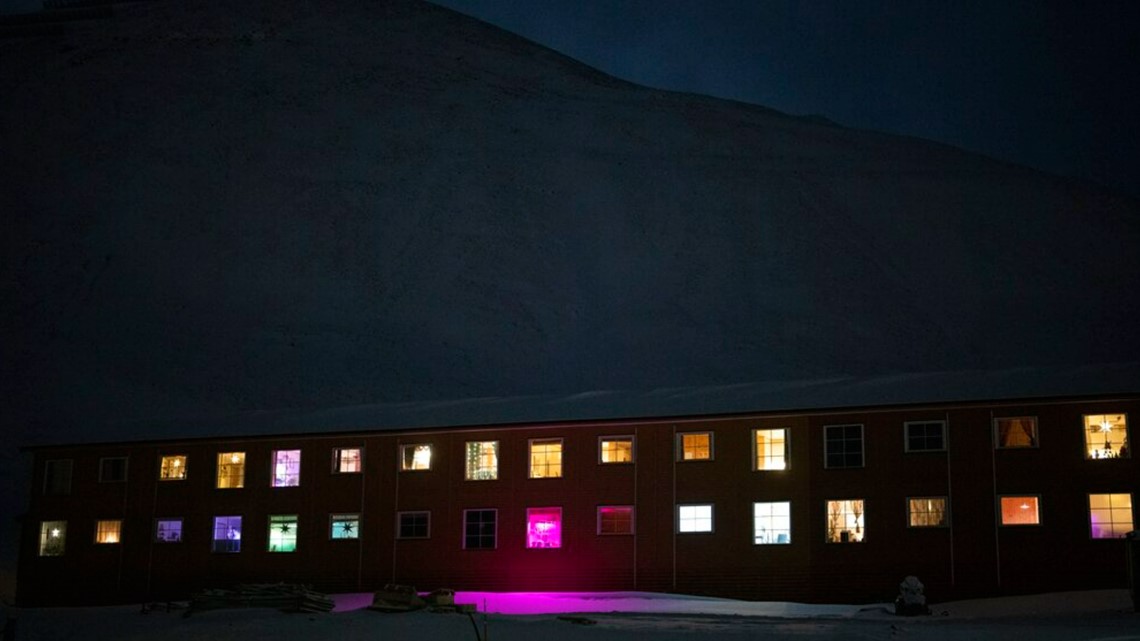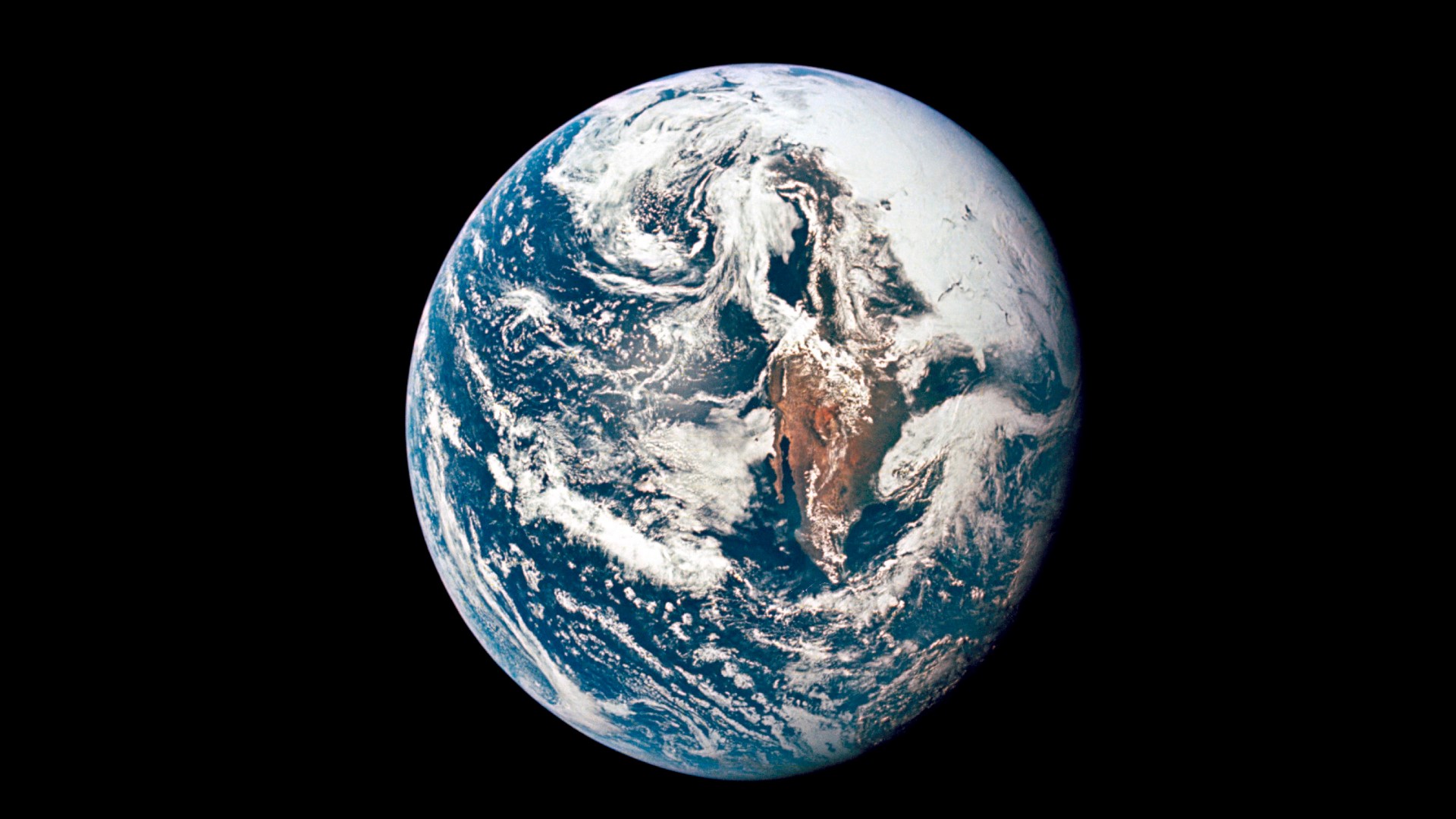LONGYEARBYEN, Svalbard and Jan Mayen — At 10:40 a.m. on a day in January, two powerful beams of light from the Svalbard governor’s boat pierced the complete darkness of the mountain-fringed fjord it was sailing. It was carrying the children’s choir from this remote village’s church to visit an even more isolated Arctic outpost.
That’s polar night in this Norwegian archipelago – so close to the North Pole the sun is at least six degrees below the horizon from mid-November through the end of January.
For the miners, scientists and tourism workers of more than 50 nationalities who make up most of Svalbard’s 3,000 inhabitants, it's challenging at first to adjust to living without even a hint of twilight in a treeless, black-and-white landscape.
“First time in Svalbard, it was like coming to the moon,” said the Rev. Leif Magne Helgesen, who was the pastor of Svalbard Kirke, the only church in the main village of Longyearbyen, for a dozen years until 2019, and has written about its fragile environment.


Then the polar night becomes an opportunity to slow down and appreciate the only glimpses of natural light – the stars, the elusive swirls of the aurora borealis, and the full moon, which circles overhead without setting for a couple of days at a time.
At almost every window, a candle or star-shaped decoration twinkles a sign of welcome. In the pitch black, the headlights of rare passing vehicles and snowmobiles pick out a reindeer’s eyes or the reflective vests and bands every human wears while walking or skiing around.


Most of all, there’s the glow of the snowpack. But that’s changing as the Arctic, and especially this archipelago lapped by warm currents, heats up faster than most of the rest of the world, delaying and reducing snowfall.
This winter in Svalbard, it rained for a few weeks after the polar night started.
“When the dark season comes … we’re used to see northern lights, the moon, stars, and the snow is lighting up. Now it became dark and depressing,” said Espen Rotevatn, the director of Svalbard Folkehøgskole, an alternative school in Longyearbyen. He’s been advocating for local solutions to climate change.


As Karina Bernlow's dogsledding pups happily played in the swirling snow on a mid-January afternoon, she also feared the prospect of warmer seasons.
“A muddy winter, I can’t live in that,” said Bernlow, who runs dogsledding outfit Green Dog with her family in a broad valley outside Longyearbyen.

